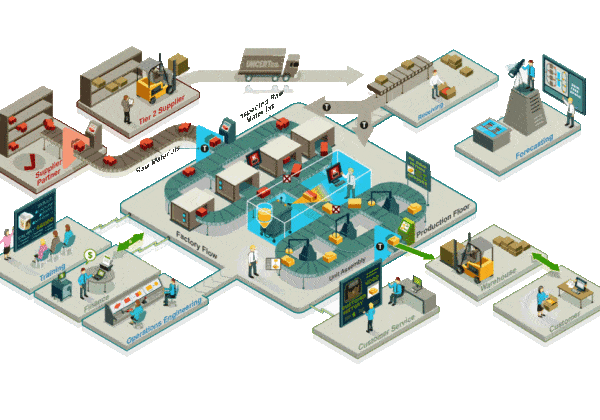
What exactly are TPS (Toyota Production System) and lean manufacturing (or just lean)? In the simplest of terms, running lean is this: creating value for the end customer and eliminating waste. In this series, we will look at these concepts and discuss whether or not companies who claim that they are running lean really are running lean or simply just doing lean.
One of the great misconceptions of our time is the idea that lean is a cost improvement initiative. This was not the original focus of lean manufacturing. In fact, Taciihi Ohno designed TPS in order to better meet demand, by improving flow and reducing lead-times. He was impressed with what Henry Ford had done in the US a few decades earlier. Ford, who pioneered the flow concept, was able to produce a finished automobile out of raw materials in just 81 hours. Amazingly, this mark has never been duplicated by any automobile manufacturer in the 91 years since Ford first achieved it. Car manufacturers have made improvements in every aspect of operations but have not been able to duplicate the initial success that started it all (we will look at the reasons why later on). The focus of TPS originally was on meeting demand while providing value to the customer.
What Ohno saw in Ford’s methodology was the ability to produce flow. Improving the flow, or smoothness of work is a way to produce evenness in the system, we all know the benefits related to evenness. What Ohno did not like was Ford’s motto: that he would build any Model T requested, as long as it was in black. Ford was able to produce the same model consistently. Ohno was not able to do this: demand for his product was in small quantities but for a much wider variety of cars. He could not take the identical approach that Ford took; he needed to mold the concept to fit his needs. Ohno was inspired by Ford’s methodology and in fact, has claimed that it was a visit to America in the 1950’s that made it all click.
After visiting an American supermarket, Ohno was finally able to fit all the components of TPS together. He realized that the methodology Ford had used was generic and could be applied to any process. Ohno saw that to establish Flow he essentially needed to get rid of inconsistencies, or mura and waste muda. By taking out inconsistencies and waste, the smoothness of work is guaranteed.
The fact that this flow methodology could be applied to any process (not just automobile manufacturing) is what made TPS and Lean successful in so many companies. Getting rid of the mura and muda became a key fundamental principle of TPS and eventually what we call it today Lean. It is funny when you look at that and see COST is not in the equation.
Stay tuned to the next part of the series as we discuss the differences in running lean and doing lean.
Newsletter Sign-Up
Keep up-to-date on what’s happening in our Demand Driven World. Get information manufacturing and supply chain topics as well as news on client achievements, up and coming training events and other interesting stuff!

